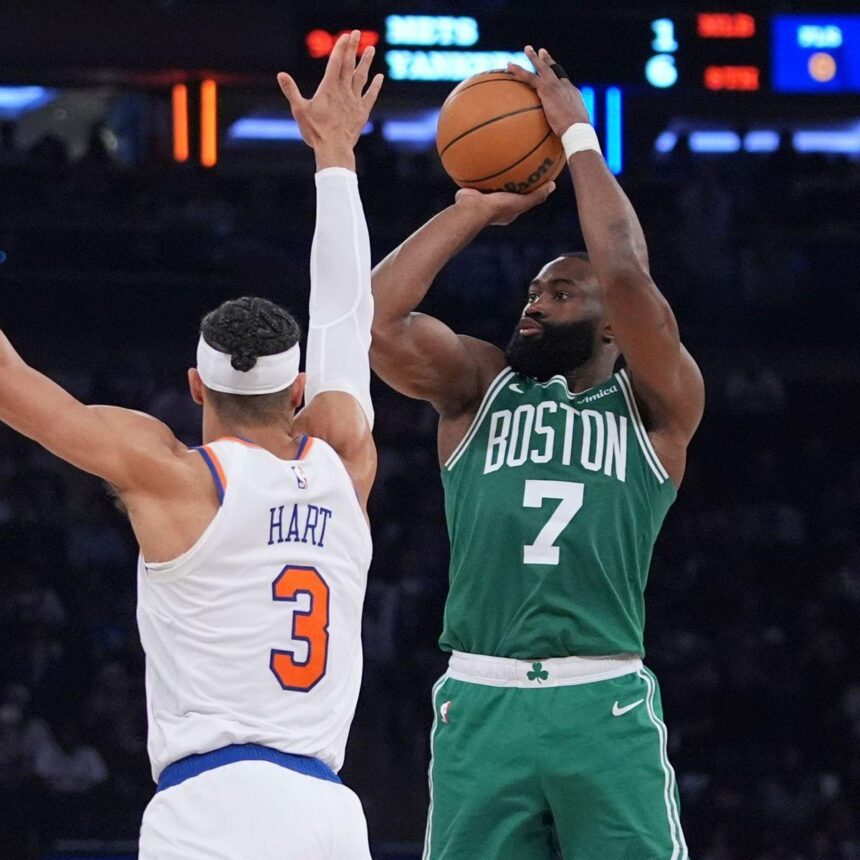In the ever-evolving landscape of the NBA, roster stability has become a rare commodity, yet the Boston Celtics have managed to defy the odds. As teams across the league embark on the annual offseason reshuffle—trading players, signing free agents, and reimagining their strategies—Boston has remained steadfast in its commitment to maintaining a cohesive unit. This dedication not only speaks to the team’s successful culture but also highlights the importance of continuity in achieving championship aspirations. In this article, we explore the Celtics’ unique approach to roster management, examining the strategies that have kept their core intact. Additionally, we provide comprehensive offseason guides for every NBA team, offering insights into what they must prioritize for the upcoming season. Whether it’s bolstering their lineup or honing in on player development, these guides serve as a roadmap for teams looking to navigate the complex terrain of the offseason. Join us as we delve into the intricacies of Boston’s roster strategy and the critical moves each team must consider as they prepare for the next chapter in the NBA.
Boston’s Strategic Approach to Roster Consistency
Boston has strategically maintained roster consistency over recent seasons, focusing on both player development and retaining core talent. This approach has fostered a sense of camaraderie and trust among players, significantly contributing to their on-court chemistry. By prioritizing the retention of key players, the organization has minimized the disruptions that often come with frequent roster turnover, allowing their stars to maximize their potential together. Moreover, the front office has been adept at identifying complementary pieces through trades and the draft, which enhances the team’s depth without sacrificing stability.
Key elements of Boston’s strategy include:
- Long-term contracts: Offering multi-year deals to key players ensures they remain part of the team for crucial seasons.
- Investment in player development: Enhancing skills and building up young talent helps integrate new players seamlessly into the system.
- Regular assessments: The coaching staff conducts evaluations to identify areas for improvement and tailor development programs that align with the team’s strategic goals.
The team’s commitment to roster consistency is reflected in the following table, showcasing players who have contributed significantly over multiple seasons:
| Player | Years with Team | Position |
|---|---|---|
| Jayson Tatum | 5 | Forward |
| Jaylen Brown | 6 | Forward |
| Marcus Smart | 8 | Guard |
Key Offseason Moves for NBA Teams in 2024
The Boston Celtics are making headlines this offseason by focusing on roster continuity rather than drastic changes. The front office is prioritizing the retention of their core talent, recognizing the chemistry developed during past seasons as a crucial asset. Key players such as Jayson Tatum and Jaylen Brown are expected to remain central figures, while veteran leadership from Al Horford will help guide their young talents. The Celtics’ approach emphasizes gradual improvement and a steady ascent in the competitive Eastern Conference.
Meanwhile, other teams are exploring various strategies to enhance their rosters. Notably, here are some of the most intriguing offseason moves across the league:
- Los Angeles Lakers: Acquiring Damian Lillard in a blockbuster trade.
- Miami Heat: Pursuing deeper bench depth to support their star players.
- Dallas Mavericks: Bringing in a versatile forward through free agency.
As teams strategize for the upcoming season, the offseason will undoubtedly feature unexpected trades, surprising draft picks, and critical free-agent signings that could reshape the league.
Analyzing the Impact of Roster Retention on Team Performance
The Boston Celtics exemplify how maintaining roster continuity can bolster team chemistry and enhance performance on the court. By retaining key players over multiple seasons, the Celtics have built a cohesive unit that understands each other’s playstyles and strengths. This synergy often translates into better communication during critical moments of games and improved overall efficiency. Additionally, a well-knit roster can result in higher morale and trust among players, which is crucial for overcoming adversity in high-pressure situations.
Analyzing data from the last several NBA seasons reveals a strong correlation between roster retention and success. Teams that keep their core players tend to exhibit:
- Improved Win Rates: A stable lineup often leads to more victories, as players optimize their systems together.
- Increased Player Development: Long-term teammates can mentor and push each other, resulting in individual and collective growth.
- Reduced Turnover Rates: Consistency reduces the time needed for players to adjust to new systems and strategies.
Here is a comparison of key metrics from teams with varying levels of roster retention:
| Team | Retention Rate (%) | Win Percentage (%) | Playoff Appearance (Last 5 Years) |
|---|---|---|---|
| Boston Celtics | 85% | 60% | 4 |
| Los Angeles Lakers | 55% | 48% | 2 |
| Brooklyn Nets | 50% | 45% | 3 |
| New York Knicks | 70% | 52% | 1 |
Closing Remarks
In conclusion, Boston’s strategic approach to roster management serves as a compelling case study for the NBA, illustrating the delicate balance of maintaining team chemistry while pursuing championship aspirations. The Celtics’ commitment to continuity, paired with smart off-season decisions, has positioned them as formidable contenders in the ever-evolving landscape of professional basketball. As we examine the offseason strategies for all NBA teams, it becomes clear that fostering cohesion within rosters remains a crucial element for success.
As franchises prepare for the upcoming season, the insights gathered from Boston’s approach can serve as a blueprint for others looking to optimize their rosters. With the draft, trades, and free agency on the horizon, each team’s off-season strategy will play a pivotal role in shaping the league dynamics. Stay tuned to ESPN for comprehensive coverage and in-depth analysis of how your favorite teams navigate their own paths to success this offseason.














